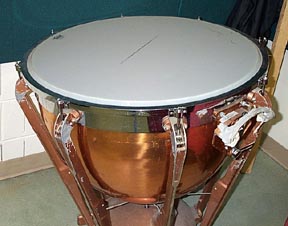
|
|

|
Drums
|
Drums come in every shape and size you can think of and from every culture. Here are just some examples. Through the ages drum heads have usually been made from animal skin stretched over a round opening. The resonating body of the drum is normally made form some kind of wood. |

|

quads, a bass drum, a snare drum and a tenor drum |

|

|

|


|

|

|
